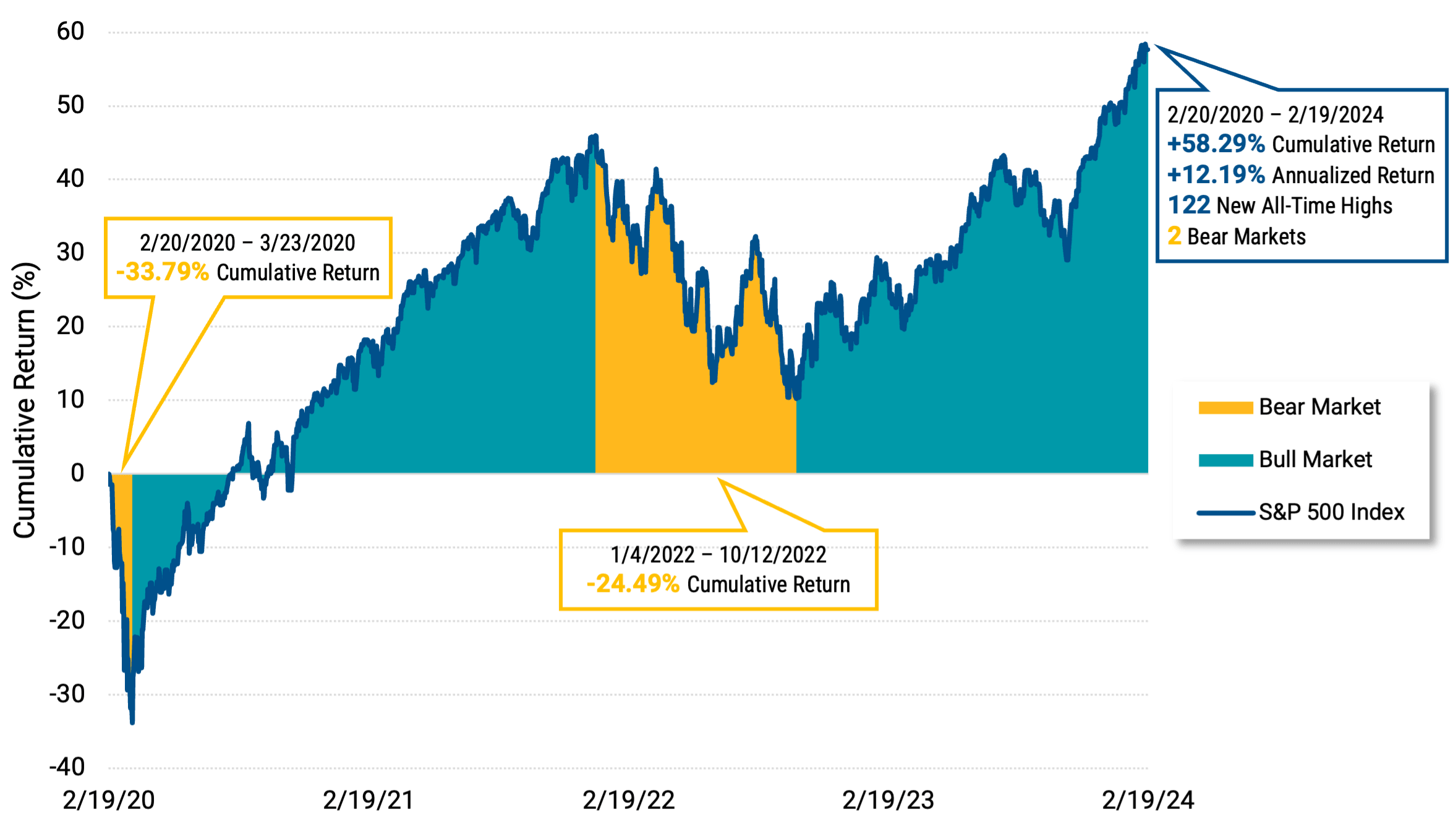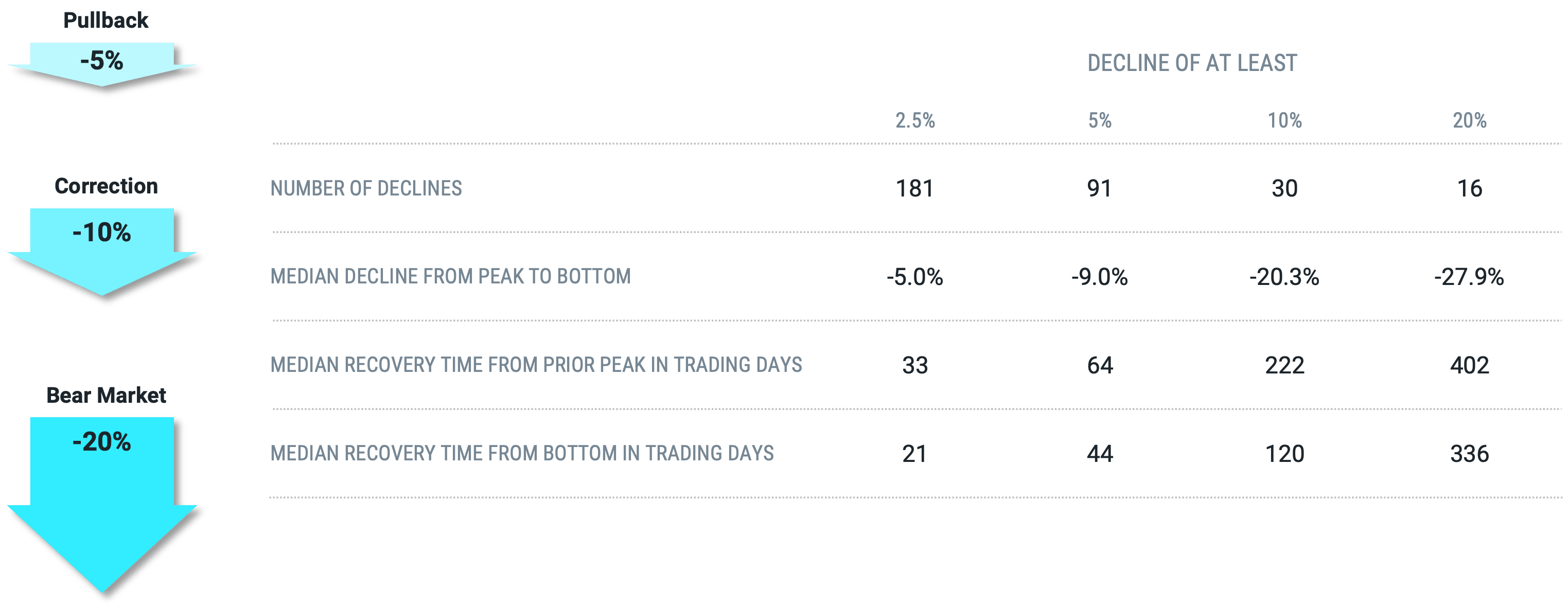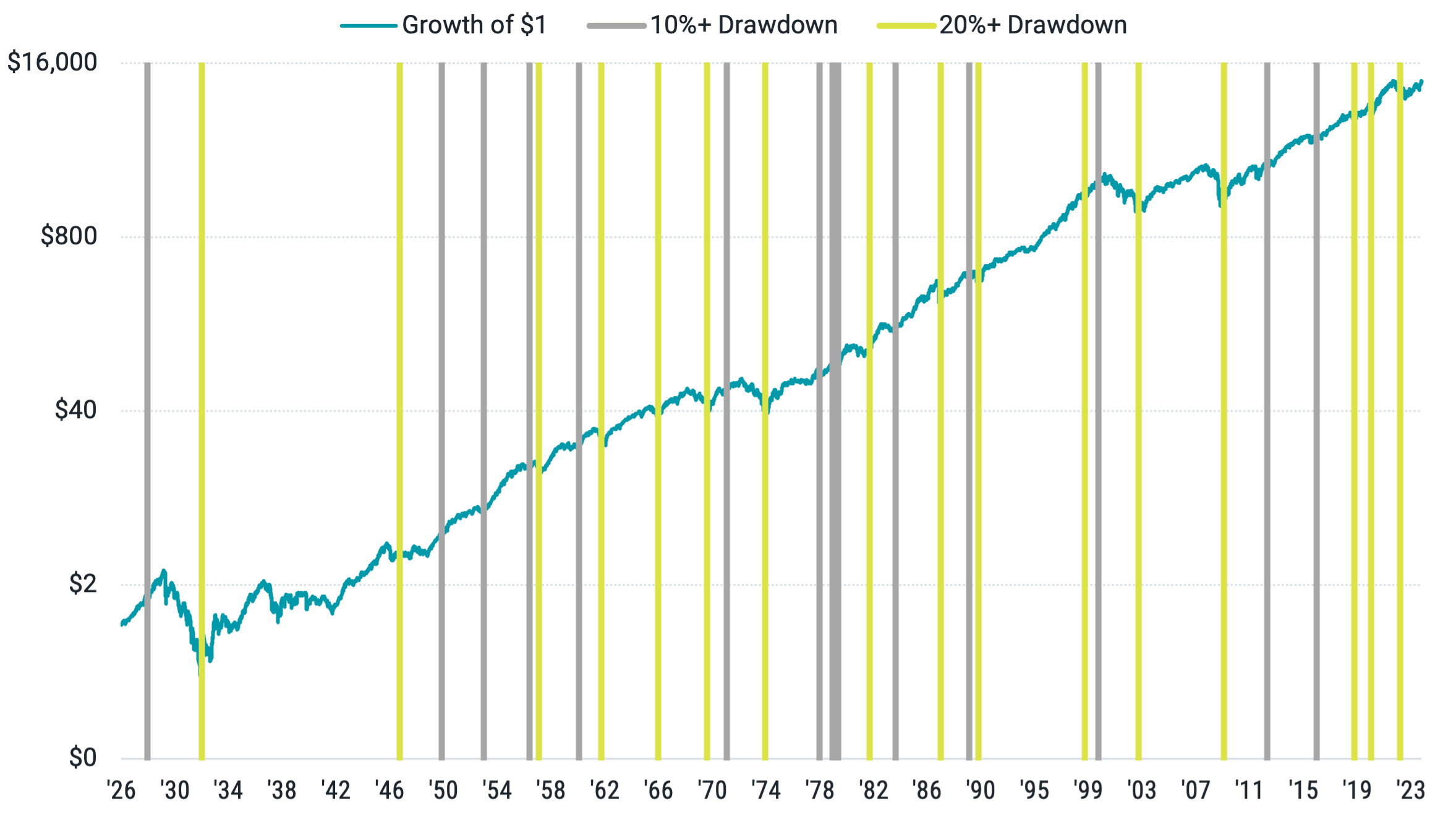Reflecting on Four Years Since the Pre-COVID Market Peak
The S&P 500® Index rose 0.49% on February 19, 2020, pushing the index to a new all-time high. This was its highest level for nearly six months as the effects of COVID-19 soon made a dramatic impact on market prices and our daily lives.
By mid-March, the World Health Organization officially declared COVID a pandemic, and investor anxiety spiked. On March 16, the S&P 500 fell nearly 12%. Outside of Black Monday in 1987, it was the largest single-day decline since the index's inception. The VIX, a measure of expected market volatility, closed the day at its highest level on record. The New York Stock Exchange executed a 15-minute trading halt for the third time that week. It was indeed a remarkable time.
Despite the financial losses endured over this period, we now understand that exercising patience in the midst of fear ultimately yielded rewards. Echoing the wisdom of Leo Tolstoy’s General Kutuzov in War and Peace, who remarked, “But believe me, my dear boy, there is nothing stronger than those two: patience and time, they will do it all.”
Fast forward four years, and the market’s trajectory since that February 2020 day serves as an incredible case study in market resilience and the power of a long-term investment philosophy.
If you knew that stocks would experience two bear market drawdowns over the next four years, would you be willing to hold them in your portfolio? It’s likely you may have reservations. Yet, this is exactly what’s happened over the past four years.

New York’s John F. Kennedy International Airport on March 11, 2020.
Figure 1 paints the picture. On top of the cumulative return of the S&P 500 over the four years since February 19, 2020, we highlight those two bear markets. The first was during the onset of the pandemic, which bottomed at a nearly 34% decline on March 23, 2020. The second was a more than 24% loss that spanned much of 2022.
Despite these tough times, the cumulative index return for the full four years was 58.29%, with 122 new all-time highs reached by the index. Remarkably, at more than 12%, the annualized rate of return was above the long-term average of the S&P.
Figure 1 | The S&P 500 Index Since its Pre-COVID Peak on February 19, 2020

Data from 2/20/2020 - 2/19/2024. Source: Avantis Investors, Bloomberg. Past performance is no guarantee of future success.
In our view, this example is impactful because it’s easy for us to recall along with the emotions we felt. But looking at the longer-term picture highlights that such periods aren’t uncommon. Figure 2 presents historical U.S. market drawdowns of various magnitudes from prior market peaks. If we focus on declines of 10% or more, there have been 30 instances over the 97 years of available U.S. market data (declines shown at 20% or more are also included in the total for 10% or more).
This means that, on average, the market has experienced a 10% or greater decline every three years. For declines of 20% or more, we’ve seen them on average about every six years. Median recovery times from the prior peak and the bottom of past declines are also provided for context.
Figure 2 | Market Declines Happen

Data based on U.S. stock returns from July 1926 - December 2023. U.S. stocks are represented by the Market Portfolio from Ken French’s Data Library. Note: Each decline bucket includes the more severe drops. For example, all sixteen 20% declines are included in the other three buckets. Source: Avantis Investors. Past performance is no guarantee of future results.
Figure 3 plots the individual correction (>10%) and bear market (>20%) periods from Figure 2 against the growth of the dollar in the U.S. market since 1926. What’s clear is that the market has seen many times that, purely from the perspective of returns, resemble what we’ve seen over the past four years. Taken together, the market has, over time, served as a powerful growth engine for investors who have stayed the course.
Given more recent market returns, which have generally been strong for investors, we should also point out that anxiety isn’t limited to periods of decline. For example, we’ve seen several new all-time highs from U.S. market indexes over the past few months. To some, this can be a sign that a pullback must be imminent. But we need only look back to Figure 3 to see that the market has reached many new highs over time, and historically, they haven’t been a predictor of future declines.
Figure 3 | Despite Declines, Markets Keep Reaching New Highs
Growth of $1 Since 1926, Including Market Corrections and Bear Markets

Data based on U.S. stock returns from July 1926 - December 2023. U.S. stocks are represented by the Market Portfolio from Ken French’s Data Library. Past performance is no guarantee of future results.
A key takeaway from the analysis is that having a plan for both the good and the bad times can serve us well. Given a time horizon of more than a few years, history tells us we will eventually face periods in which we’re tested by market volatility. Just the same, we can see extended periods where the market seems to reach new highs again and again.
Here’s a few things that might help to keep in mind. We should remember why we invest in stocks in the first place. For many, it’s because we want long-term growth, and we expect stocks to provide higher returns over the long term than other options like bonds or cash-like securities. Historically, stocks have delivered on that expectation. We shouldn’t lose sight of declines as a normal part of investing in stocks and that the long-term average returns have been realized through those ups and downs.
The last four years offer a great example of why staying focused on the bigger picture and hitting the proverbial “mute” button on short-term noise can serve as sound principles for long-term success.
Glossary
S&P 500® Index: A market-capitalization-weighted index of the 500 largest U.S. publicly traded companies. The index is widely regarded as the best gauge of large-cap U.S. equities.
VIX Index: Tracks the expected 30-day future volatility of the S&P 500 Index.
Investment return and principal value of security investments will fluctuate. The value at the time of redemption may be more or less than the original cost. Past performance is no guarantee of future results.
This material has been prepared for educational purposes only. It is not intended to provide, and should not be relied upon for, investment, accounting, legal or tax advice.
The opinions expressed are those of the portfolio team and are no guarantee of the future performance of any Avantis fund.